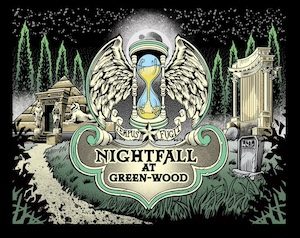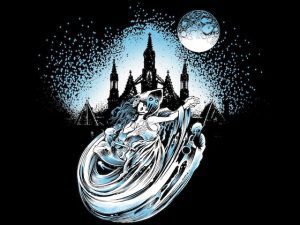Death Café
Green-Wood Cemetery 500 25th Street, Brooklyn, NY, United StatesThe Death Café is inspired by the centuries-old European salon (or café), an informal gathering to discuss philosophical, political or scientific ideas. In 2011, British entrepreneur Jon Underwood brought this concept to discussions of the most universal topic of all: death. Underwood’s intention was to provide an opportunity to “increase awareness of death with a view to helping people make the most of their lives.” Today, there are over 4,400 Death Cafes in 26 countries around the world.
Liszt: Poetic and Religious Harmonies
Almost no one plays the complete Poetic and Religious Harmonies by Franz Liszt. Between the sheer finger-bending virtuosity, emotionally-draining intensity, and epic length, each of the ten movements stands as its very own musical monolith. But when experienced all together, the cycle gains an almost mystical transcendence, a spiritual journey from the opening “Invocation,” the meditative glow of “The Blessing of God in Solitude,” the anguish of “Funeral,” and the quiet rapture of “Hymn of Love.” It’s a lot for one pianist to take on, and that’s why we’ve got two of ‘em: keyboard stars Adam Tendler and Jenny Lin, both bringing their unique talents and vision to their respective half of the piece.
Liszt: Poetic and Religious Harmonies
Almost no one plays the complete Poetic and Religious Harmonies by Franz Liszt. Between the sheer finger-bending virtuosity, emotionally-draining intensity, and epic length, each of the ten movements stands as its very own musical monolith. But when experienced all together, the cycle gains an almost mystical transcendence, a spiritual journey from the opening “Invocation,” the meditative glow of “The Blessing of God in Solitude,” the anguish of “Funeral,” and the quiet rapture of “Hymn of Love.” It’s a lot for one pianist to take on, and that’s why we’ve got two of ‘em: keyboard stars Adam Tendler and Jenny Lin, both bringing their unique talents and vision to their respective half of the piece.
Liszt: Poetic and Religious Harmonies
Almost no one plays the complete Poetic and Religious Harmonies by Franz Liszt. Between the sheer finger-bending virtuosity, emotionally-draining intensity, and epic length, each of the ten movements stands as its very own musical monolith. But when experienced all together, the cycle gains an almost mystical transcendence, a spiritual journey from the opening “Invocation,” the meditative glow of “The Blessing of God in Solitude,” the anguish of “Funeral,” and the quiet rapture of “Hymn of Love.” It’s a lot for one pianist to take on, and that’s why we’ve got two of ‘em: keyboard stars Adam Tendler and Jenny Lin, both bringing their unique talents and vision to their respective half of the piece.
Liszt: Poetic and Religious Harmonies
Almost no one plays the complete Poetic and Religious Harmonies by Franz Liszt. Between the sheer finger-bending virtuosity, emotionally-draining intensity, and epic length, each of the ten movements stands as its very own musical monolith. But when experienced all together, the cycle gains an almost mystical transcendence, a spiritual journey from the opening “Invocation,” the meditative glow of “The Blessing of God in Solitude,” the anguish of “Funeral,” and the quiet rapture of “Hymn of Love.” It’s a lot for one pianist to take on, and that’s why we’ve got two of ‘em: keyboard stars Adam Tendler and Jenny Lin, both bringing their unique talents and vision to their respective half of the piece.
Pergolesi: Stabat Mater
The Stabat Mater is a medieval poem that describes the suffering of Jesus’s mother Mary as she stands at the foot of the cross. Pergolesi’s setting of the text is among the most haunting and gut wrenching compositions ever put to paper. At one point, the piece asks us if it’s possible to watch someone else suffer so deeply, and not somehow share in their sorrow. It stands as one of the purest musical depictions of empathy, and a powerful reminder that - no matter what pain we may feel in the moment - we’re never truly alone in our sadness. Performed by the String Orchestra of Brooklyn, the program will also feature Barber’s wrenching Adagio for Strings, and Arvo Pärt’s slow-burning Fratres, and if that all wasn’t enough - the entire performance will feature wall-to-ceiling film projections up and down the catacombs, from the masters Ricardo Romaneiro and Mau.
Pergolesi: Stabat Mater
The Stabat Mater is a medieval poem that describes the suffering of Jesus’s mother Mary as she stands at the foot of the cross. Pergolesi’s setting of the text is among the most haunting and gut wrenching compositions ever put to paper. At one point, the piece asks us if it’s possible to watch someone else suffer so deeply, and not somehow share in their sorrow. It stands as one of the purest musical depictions of empathy, and a powerful reminder that - no matter what pain we may feel in the moment - we’re never truly alone in our sadness. Performed by the String Orchestra of Brooklyn, the program will also feature Barber’s wrenching Adagio for Strings, and Arvo Pärt’s slow-burning Fratres, and if that all wasn’t enough - the entire performance will feature wall-to-ceiling film projections up and down the catacombs, from the masters Ricardo Romaneiro and Mau.
Pergolesi: Stabat Mater
The Stabat Mater is a medieval poem that describes the suffering of Jesus’s mother Mary as she stands at the foot of the cross. Pergolesi’s setting of the text is among the most haunting and gut wrenching compositions ever put to paper. At one point, the piece asks us if it’s possible to watch someone else suffer so deeply, and not somehow share in their sorrow. It stands as one of the purest musical depictions of empathy, and a powerful reminder that - no matter what pain we may feel in the moment - we’re never truly alone in our sadness. Performed by the String Orchestra of Brooklyn, the program will also feature Barber’s wrenching Adagio for Strings, and Arvo Pärt’s slow-burning Fratres, and if that all wasn’t enough - the entire performance will feature wall-to-ceiling film projections up and down the catacombs, from the masters Ricardo Romaneiro and Mau.
Death Café
Green-Wood Cemetery 500 25th Street, Brooklyn, NY, United StatesThe Death Café is inspired by the centuries-old European salon (or café), an informal gathering to discuss philosophical, political or scientific ideas. In 2011, British entrepreneur Jon Underwood brought this concept to discussions of the most universal topic of all: death. Underwood’s intention was to provide an opportunity to “increase awareness of death with a view to helping people make the most of their lives.” Today, there are over 4,400 Death Cafes in 26 countries around the world.
Death Café
Green-Wood Cemetery 500 25th Street, Brooklyn, NY, United StatesThe Death Café is inspired by the centuries-old European salon (or café), an informal gathering to discuss philosophical, political or scientific ideas. In 2011, British entrepreneur Jon Underwood brought this concept to discussions of the most universal topic of all: death. Underwood’s intention was to provide an opportunity to “increase awareness of death with a view to helping people make the most of their lives.” Today, there are over 4,400 Death Cafes in 26 countries around the world.
Green-Wood’s public programs are made possible by the New York State Council on the Arts with the support of the Office of the Governor and the New York State Legislature, as well as the New York City Department of Cultural Affairs.


